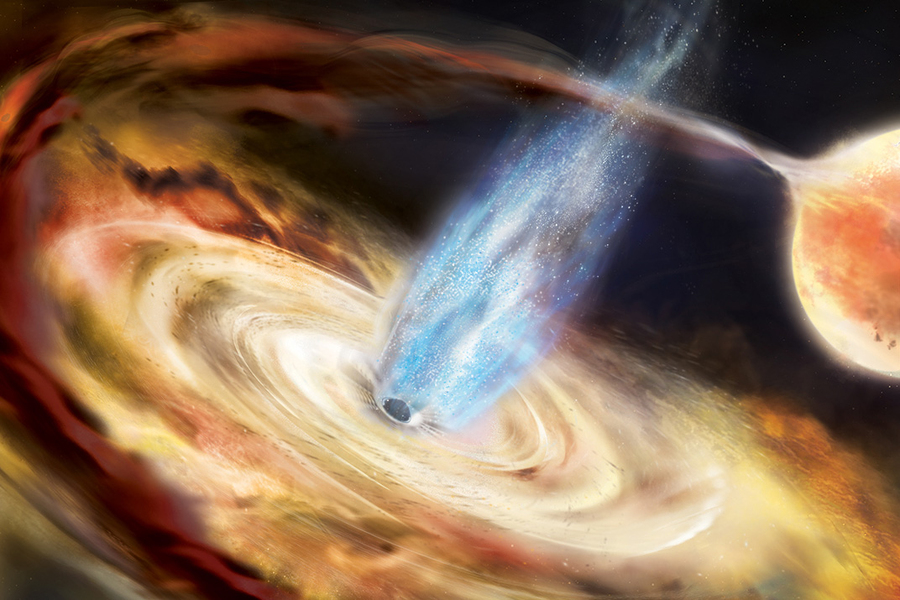Black holes are one of the most mysterious objects in our Universe that are invisible, and have an unimaginable force of gravity, where light is unable to escape from them. However, a team of astronomers did the unthinkable when in 2019 they published the first direct photo of a black hole using the Event Horizon Telescope (EHT). Now, thanks to a team of astrophysicists from the Massachusetts Institute of Technology, we can not only see, but also hear a black hole.

This milestone was achieved by converting the echoes of binary black holes into sound waves. As a result, the experts got an incredible result – the eerie sound of the most “hungry” object in the Universe. In a new study published in the Astrophysical Journal, astrophysicists noted that two known such systems in the Milky Way emit X-ray echoes.
What was the sound recorded with?
The white circle in the image is the location of the event horizon of the black hole. The event horizon is, in fact, the boundary of a black hole, after which even light cannot leave it. In addition, the video also shows a simulated reflection of light from the accretion disk of a black hole, and the light reflections are color-coded according to the observed frequency. In an official report, experts reported that they had detected echoes of the black hole using a new automated instrument, the Reverberation Machine, and data from the NICER telescope installed on board the International Space Station.
Explanation of galaxy evolution by black holes
Associate professor of physics at the Massachusetts Institute of Technology, Erin Kara, said that black holes are an important factor in understanding the evolution of our galaxy. She explained that the black holes studied by her team are “mini” supermassive black holes.
“By understanding the flares in these small, close systems, we can understand how supermassive black holes affect the galaxies they are in,” Kara added.
According to MIT News
Earlier, NASA visualized 22 black holes.
Follow us on Twitter to get the most interesting space news in time
https://twitter.com/ust_magazine

